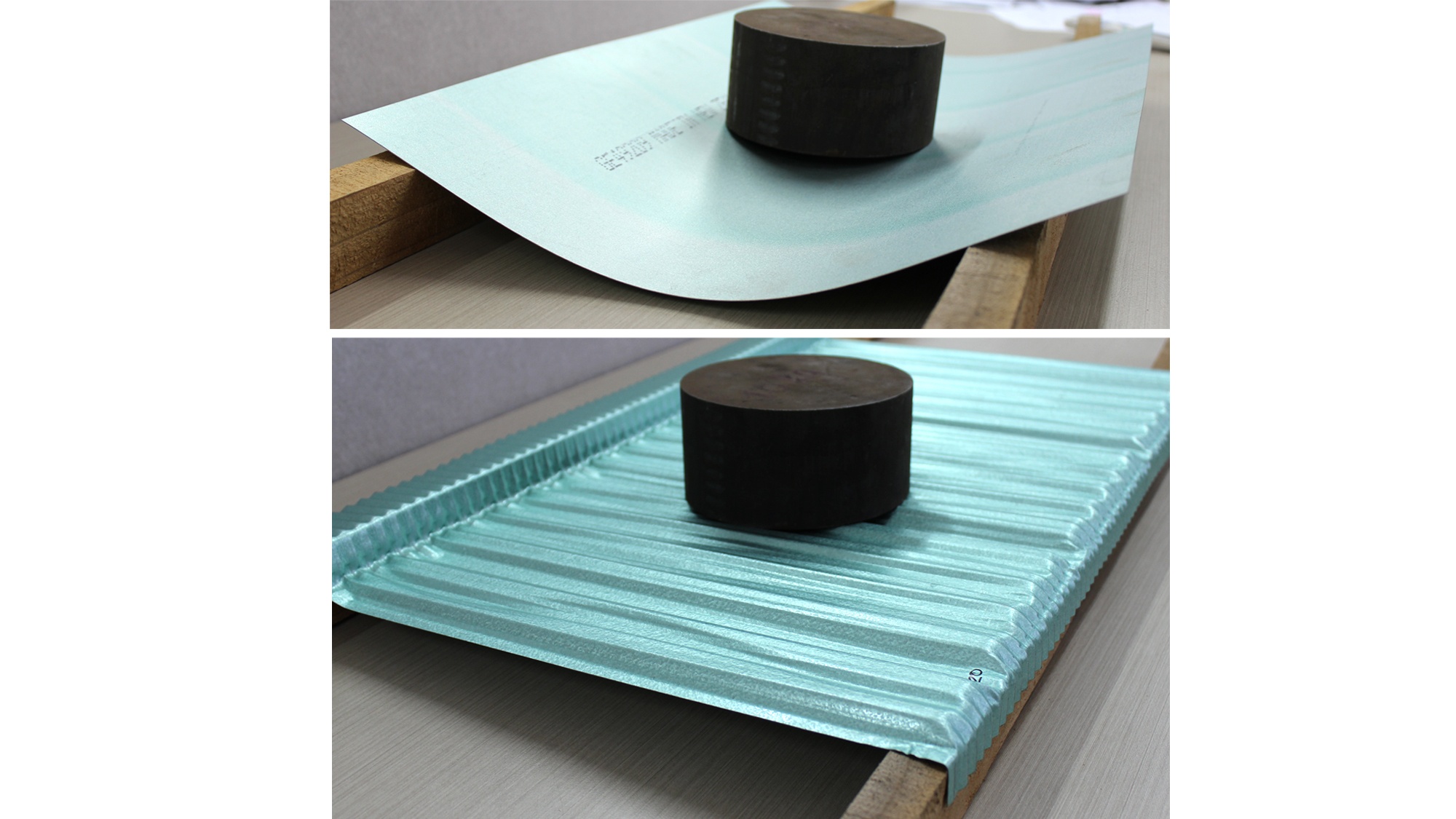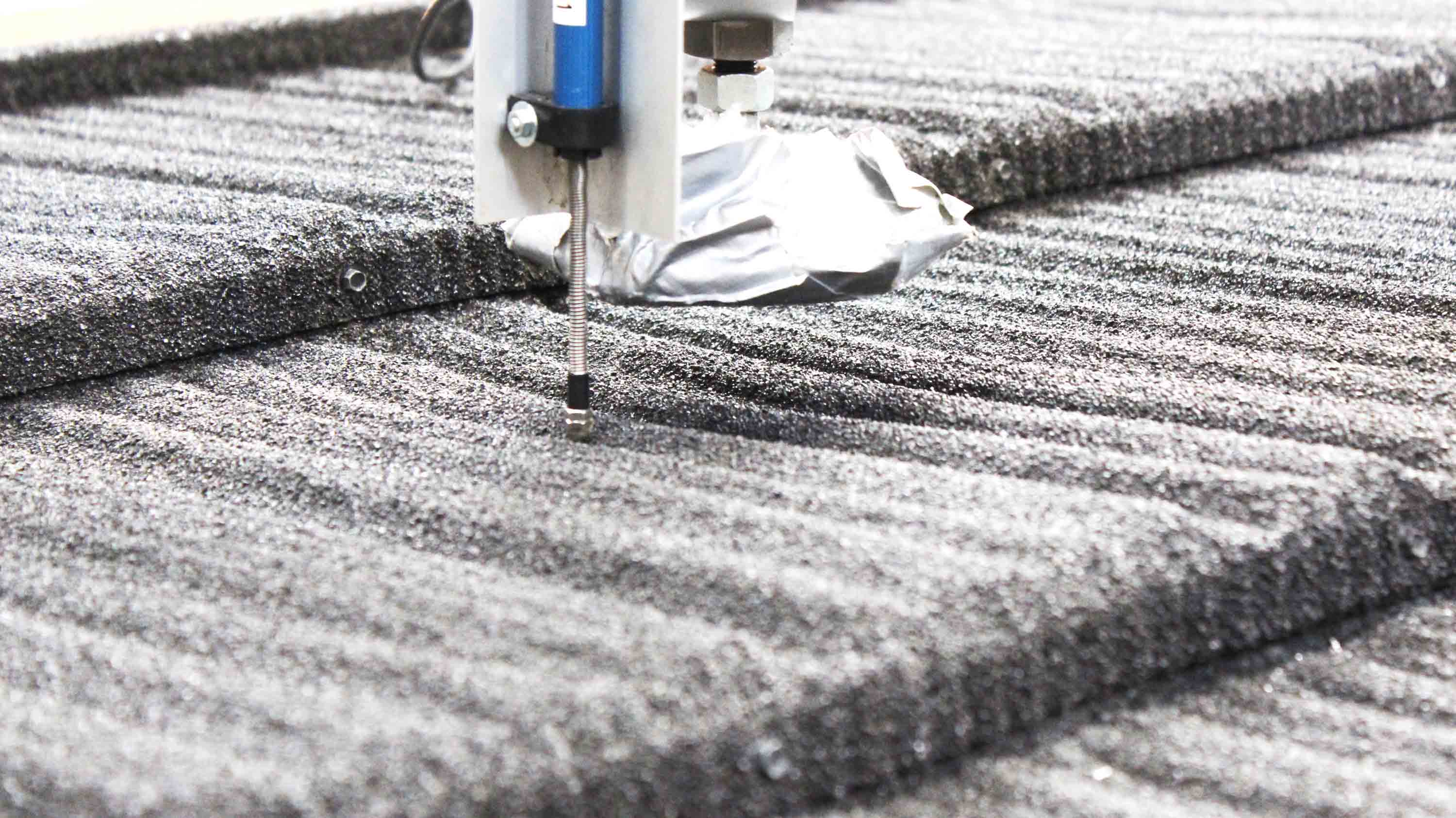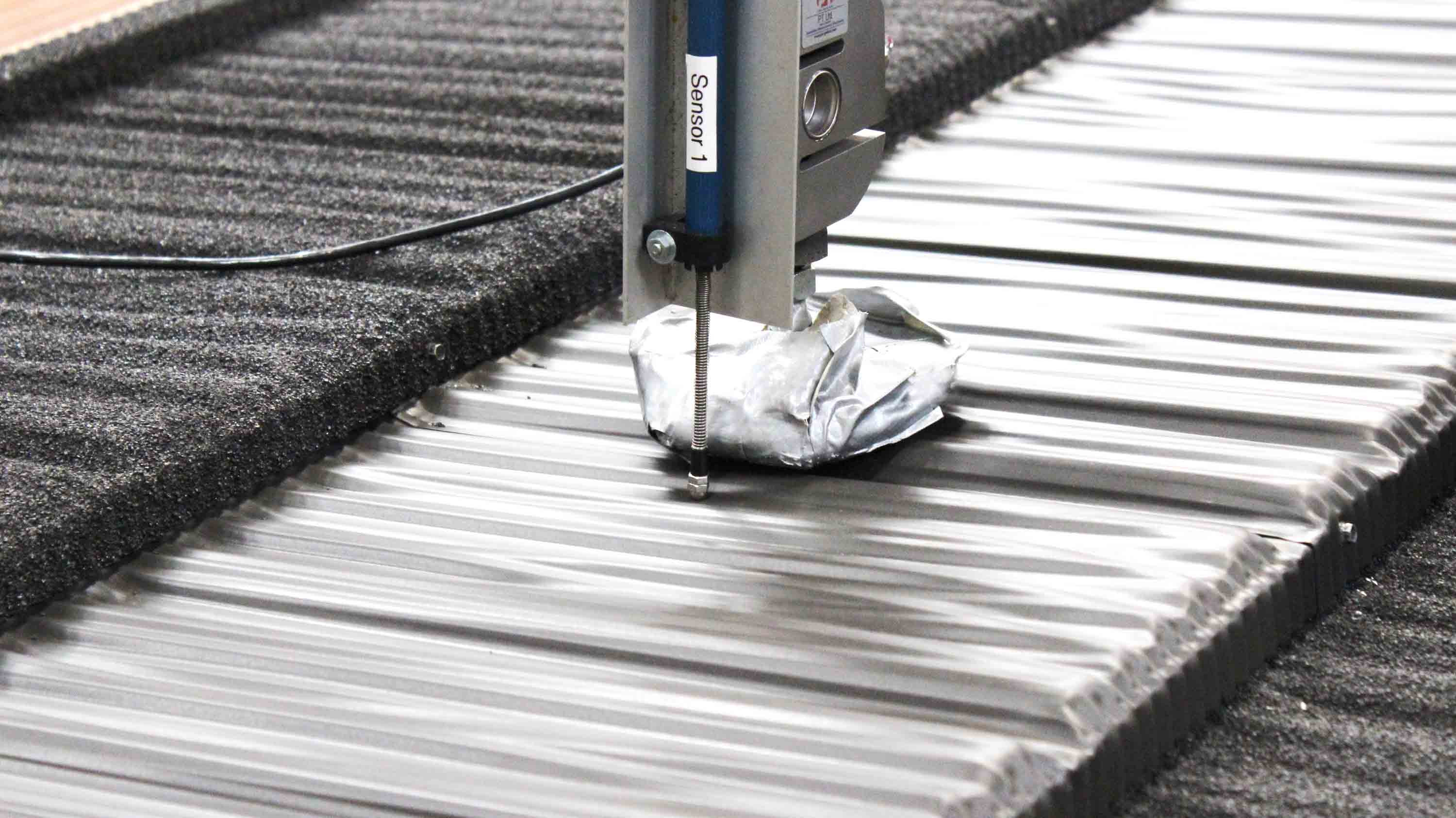Designed to last
Both of our Shake and Royal profiles are pressed from a corrugated steel slit sheet. Shake is our strongest profile because the corrugated sheet combined with an extra, deep-ribs of this profile strengthen the tiles, providing water channels and creating a visually appealing profile with shadow lines and visual contrast.
See how steel behaves once it’s had this process applied below. The image shows the comparison of the same weight on a flat sheet of steel and demonstrates the strength of the tile after it’s been machine corrugated and pressed into our Shake profile.

Independent Testing


In order to prove the strength of our profiles and determine its resilience when being walked upon, recent independent tests were conducted. The Shake profile produced remarkable results, displaying that it can be used with confidence and does not fall into the same category as some of the older, less advanced, metal tile roofs.
The point load testing was carried out at NZ Metal Roofing Manufacturers’ testing facility in Huntly under the supervision of Stuart Hayman and professional engineer John Dale, of JD Consulting Engineers.
The testing was undertaken to assess the concentrated load bearing performance of the tile when installed on a roof structure – this was to see how the tile would perform if roof access was required for maintenance, and walkways were not provided.
Another purpose of the testing was to determine the load required to produce product failure, described as unacceptable residual displacement. Failure was produced by increasing the concentrated load on to the tile until it became distorted and not able to deflect back to its original state.
Outcome
Our shake tile profile passed an impressive 1.3kN point load test. The tiles were tested by applying a concentrated (point) load in three positons on the tile, which were released after one minute. The displacement was measured under the load and the residual displacement was measured one minute after the load was removed.
The results tell us that our Shake profile tile can handle approximately 130kg of load on any part of the roof tile, which could be thought of as approximately the same as the foot pressure of a large man. This means that walking can be on any part of the roof, not just over the battens or purlins.
What does this mean for you?
Whether you are building new or re-roofing it is important that you can trust your roofing material to resist pressure and that it can confidently be walked on as ancillary trades e.g. plumbers or aerial installers need access to the roof. By using Tilcor Shake profile you know that these procedures and future maintenance can be carried out without concern of causing damage before construction is finished.



 Tilcor EU
Tilcor EU
 Poland
Poland
 Ukraine
Ukraine
 Croatia
Croatia
 Slovenia
Slovenia
 Slovakia
Slovakia
 Romania
Romania
 Kazakhstan
Kazakhstan
 Lithuania
Lithuania
 Estonia
Estonia